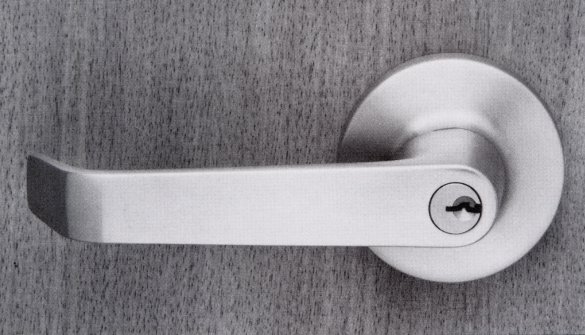NEW SEARCH NEW SEARCH, STATE - WA
First Prev
DISCLAIMER:
Whilst all care is taken to provide accurate information with respect to the item described, the Independent Living Centre (ILC) is not involved in product design or manufacture, and therefore not in a position to guarantee the accuracy of the information provided. Selection of equipment, which is both suitable and appropriate for individual needs remains the responsibility of the person(s) considering requisition, and no responsibility is taken by the ILC for any loss or injury caused through use of the equipment or alleged to have arisen through reliance upon information provided. As information is subject to change any enquiries should be directed to the manufacturer.
Item Details
A Guide To Selecting Lever Door Handles
ILC Reference NO 81:56:998
Item sourced from ILC WA database

Short Description
Many styles of door handles may be considered prior to installation into a private, public or healthcare facility building. Generally, a door should be able to be unlocked and opened using one hand. Lever action handles are specified in the Australian Standards as the 'preferred' choice for public buildings. Lever action handles are available in an extensive range including: lock, passage, dummy, privacy and entry sets.
Price Guide
Refer to supplier details for pricing
More Details
General features to consider when selecting a lever handle may include:
1. The user's needs both now and in the future.
2. Door to which the handle is to be fitted. Consider: internal / external and material; need for a lock or privacy indicator.
3. Requirement for a face plate (the face plate protects the door surface from damage). The face plate may have an allowance for the handle only, or a handle and lock / emergency button / turn snib. Usually available in a range of finishes to match the decor and handle colour.
4. Finish of the handle: consider the need for a textured finish, to reduce slippage when using the handle; presence of a return at the end of the handle (where the end of the lever is turned back towards the door, to prevent the person's hand from slipping off the handle); colour contrast of the handle to the plate or door surface.
5. Sufficient clearance between the handle and the plate or door surface. Australian Standards AS1428.1 - 1998 (p 38) states "Where lever handles are provided, the clearance between the handle and the back plate or door face at the centre of the handle shall be not less than 35mm and not more than 45mm."
6. Other features: shape of the lever (rounded / square edges) and ease of gripping / comfort; locking / unlocking method - dead lock, key, turn button on interior handle, small hole to insert special key in case of emergency; one or two handed operation; lever length.
Models / Styles
A range of different styles are available, depending on the manufacturer. Examples include:
- Key in Lever Locksets
- Individually chosen plate, lever, turn snib / emergency button, lock.
The handles can be shaped in a variety of ways, not all will be suitable for all persons:
- Cylindrical or rectangular shaped handle, no return;
- Cylindrical or rectangular shaped handle, with a return;
- A curved or shaped handle;
- A knob style handle, which still acts as a lever.
Selecting A System
Selecting a lever handle for a person with a vision impairment
Suitable colour contrast between the handle and the plate or door surface will assist the handle in being located. A matt finish on the door and handle may reduce glare.
Selecting a lever handle for a person with reduced strength or the use of one hand
Consider a handle that operates with less upper limb strength, these can be recommended by the manufacturer. A handle with a return will help prevent the hand slipping off the handle. Some handles can be installed at 45 degrees, which allows them to be more readily opened using the forearm or elbow.
Other factors such as the resistance provided by the hinges, door closer, wind or air lock etc will also effect the ease of opening the door.
Installation
Note ease of installation and requirement for fitted by a qualified tradesperson.
Some are able to be installed at 45 degrees (check with supplier).
Australian And Other Standards
Relevant Australian Standards:
AS 4145.2 - 1993 Mechanical locksets for doors in buildings.
AS 1428.1 - 1998 Design for access and mobility. Part 1: General Requirements for access - New building work.
Supplier Information - click to supplier for contacts details
IDEA ONLY,
,
Additional /images
No additional /images apply to this item
First
Prev ![]()
![]() Next
Last
Next
Last
